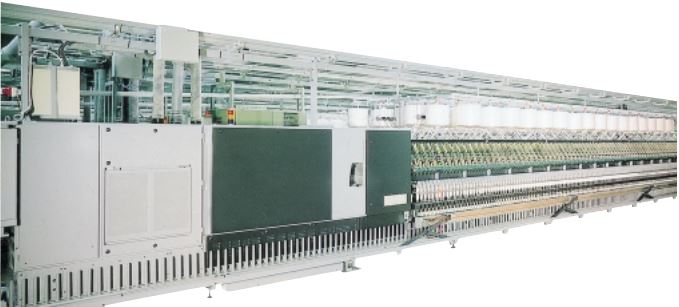© 2025 All rights reserved
Project by UsedTextilemachines.eu
Don't have an account yet? Sign in
Do you already have an account? Go to login Click here
Don't have an account yet? Sign in
Do you already have an account? Go to login Click here
Looking for the best opportunities to satisfy the customer:
Mobile Phone : +393319020189
Working hours: 09.30 / 12.30 - 16.00/18.00 From Monday to Friday.
This spinning system requires operations that transform the chosen part (top) of the wool into yarn,
after the mass of fibers has been purified of the vegetal parts and they have been eliminated, with the
dyeing, short fibres.
Combed yarns, both natural and synthetic fibres, are mainly used for
clothing, both traditional and knitted. They appear smooth, very regular in section, rather
They are cold and free of fluff, since the fibers that constitute them are longer than those
used in carded and more parallel yarns.
The preparation for worsted spinning consists of
1. carding, which takes place on so-called comb cards which collect the fleece into ribbons.
This operation eliminates the greatest quantity of plant parts, forming a continuous ribbon of
stretched fibers;
2. actual preparation for spinning, composed of a mixer, a combing machine and
a series of successive passages through comb drawing frames called intersecting, with coupling
you and ironing of various ribbons, necessary to give them greater regularity and homogeneity.
The belts will finally feed a passage to the finishing bench which produces stop reels.
pines, ready for the transition to actual spinning: ring (fig. 3).
3. Ring or ring spinning constitutes the last operation of the entire process and serves the purpose
to give twist and a final stretch to the wick, so as to give it the resistance characteristics
za, elasticity, count and required twists. This operation can also be done on some
roving types from the carded spinning process.

The open end system (fig. 4) developed in the spinning of cotton cut fibres. This system achieves the condensation of the fibers using the internal groove located on the periphery of a small rotor (turbine). The machine has a rotor for each wire head. The previously prepared feed ribbon or sliver is disaggregated (disintegrated) into individual fibers and reaches the rotor. The fibers have, with the feeding belt, a very low speed which gradually increases, undergoing considerable stretching. Upon arrival in the rotor, with its rapid rotation, it subjects the fibers inside to a high centrifugal force which pushes them towards the periphery.
feria where the surface is profiled in a particular way and such as to give the yarn an adequate shape and to straighten the fibres. These overlap and condense, abandoning the
throat of the rotor with a certain twist and with a speed much lower than the peripheral speed of the turbine, giving rise to continuous spinning where the yarn is wound onto cones.

The spinning of chemical fibres, whether artificial or synthetic, starts from a polymer (substance of
base) made liquid by solution or melting, which is extruded through a multi-hole die.
The continuous burrs thus obtained are solidified. If we want to make analogies we proceed as follows
for the spider that weaves its web or as the silkworm that produces the thread to create its own
cocoon. The result is a continuous filament which can, if necessary, be cut into staple for later
be mixed with other fibers of discontinuous length, both in the carded and combed system. Give her
spinnerets it is possible to obtain monofilament threads (i.e. made up of a single filament) or yarns (called multi-
burr), twisting together several continuous burrs, depending on the yarn count to be achieved.
After the sale of the machinery, we also assist you in logistics and, if desired by the customer, we have technicians capable of reassembling and starting up the machinery.
© 2025 All rights reserved
Project by UsedTextilemachines.eu
| Cookie | Durata | Descrizione |
|---|---|---|
| cookielawinfo-checkbox-analytics | 11 months | This cookie is set by the GDPR Cookie Consent plugin. The cookie is used to store the user consent for the cookies in the "Analytics" category. |
| cookielawinfo-checkbox-functional | 11 months | The cookie is set by GDPR cookie consent to record the user consent for the cookies in the category "Functional". |
| cookielawinfo-checkbox-necessary | 11 months | This cookie is set by the GDPR Cookie Consent plugin. The cookies is used to store the user consent for the cookies in the category "Necessary". |
| cookielawinfo-checkbox-others | 11 months | This cookie is set by the GDPR Cookie Consent plugin. The cookie is used to store the user consent for the cookies in the category "Other. |
| cookielawinfo-checkbox-performance | 11 months | This cookie is set by the GDPR Cookie Consent plugin. The cookie is used to store the user consent for the cookies in the "Performance" category. |
| viewed_cookie_policy | 11 months | The cookie is set by the GDPR Cookie Consent plugin and is used to store whether or not user has consented to the use of cookies. It does not store any personal data. |
Fill out the form to contact me